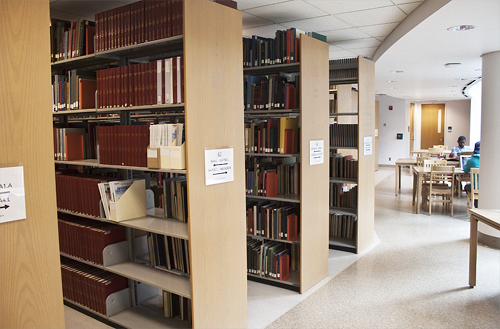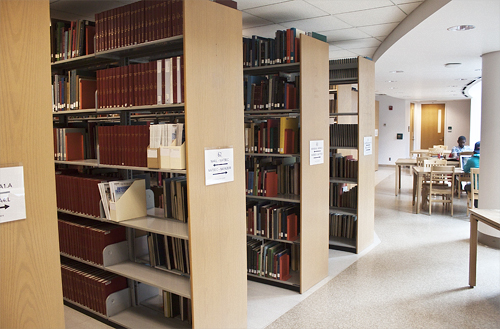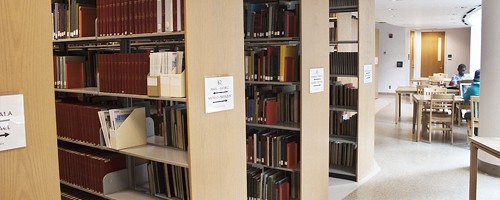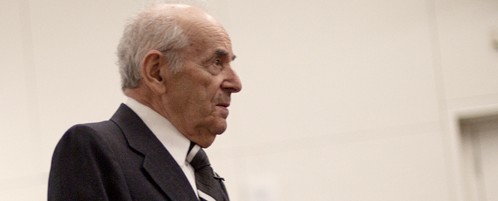On May 7, Portland State announced that the Center for Online Learning and the Center for Academic Excellence would merge to create one collaborative center that combines the offerings of each.
Merger claims up to 4,800 square feet of Millar Library


On May 7, Portland State announced that the Center for Online Learning and the Center for Academic Excellence would merge to create one collaborative center that combines the offerings of each.
In a previous Vanguard article, it was reported that, currently, the COL and CAE are located in the Market Square Building and Cramer Hall, respectively. Melody Rose, vice provost for Academic Programs and Instruction, said that in the short run, each one plans to continue to work where they are now, but in the long run, the Space Committee has approved the merged unit to build out a section of the Millar Library [“PSU centers to merge in 2012–13,” May 17].
After that article was published, concerns were raised regarding the new center’s location in Millar Library.
“It’s a very specific campus resource that’s now being converted to the utilization of space that’s very generic and could be easily moved elsewhere,” said Professor of art history and Director of Hellenic studies Anne McClanan.
McClanan sees this move as a way the university is diminishing research resources for both faculty and students. “Also for the whole community, because it’s the only university library that’s opened to the public in the main city in Oregon, and they’re getting rid of things,” she said.
The combined unit has been allowed 4,800 square feet maximum use. This space will be located on the southwest corner of the third floor.
“Our hope is that with good design, we will occupy less than that outer limit,” Rose said. “This will involve moving mostly microforms.”
Microforms are often negatives of various documents stored in the library. Interim University Librarian Lynn Chmelir said that the microforms being moved will be microfilms stored on reels and microfiches stored on film paper. These will be moved to the off-site library annex. She said they are also moving 50,000 books to the basement of the library and removing 36 study seats.
McClanan thinks that moving resources can cause major issues. “There’s a lot of research that shows moving stuff off-site really diminishes circulation rates, and I think there are a lot of implications that are quite problematic.”
One implication she pointed out is that for student research, it’s often the case that if students have to wait a couple of days to get a book they might as well not even have it.
Provost and Vice President for Academic Affairs Roy Koch said that through this new center, the university will be placing its teaching and learning support activities in the library, making it more easily accessible to faculty. In addition, a number of other student support activities, like tutoring and the Writing Center, will also be moving to the library, Koch said.
“Having all of these services in the library can help both faculty and students and expand the role played by the library building to better serve both groups,” Koch said.
“I think it’s important to differentiate the fact that they’re moving in the student services piece of the online learning center that they’re developing. And I think that makes a lot of sense to have in the library,” McClanan said. “But I don’t think it’s appropriate to move in administrative offices that don’t particularly need to be in the library.”
McClanan added that aside from teaching art history, she is also involved in digital humanities, which many experts say is a very hard field to define. Previously known as humanities computing, digital humanities is working to intersect computing and the humanities into one field. The key is that those who work in the digital humanities work with both print and digital documents.
“One thing I find frustrating is I keep hearing the administrators say that we don’t need the book resources because we have the digital resources,” McClanan said. “And I think that demonstrates a lack of understanding of the quickened obsolescence rate you actually have with digital materials over print materials.”
She pointed out that, yes, there are some fields where all research can be done online, “but there are a lot of fields in the university for which that’s erroneous.”
Koch echoed McClanan’s frustration and said it’s not only happening at PSU.
“As more and more of the traditional reference materials—journals, e-books, etc.—become electronic, many campuses are trading out space that is no longer required to house a growing print collection to support both student and faculty activities,” Koch said.
Koch said that the library has two primary user groups: students and faculty.
McClanan added that the university library’s purpose is to store books.




